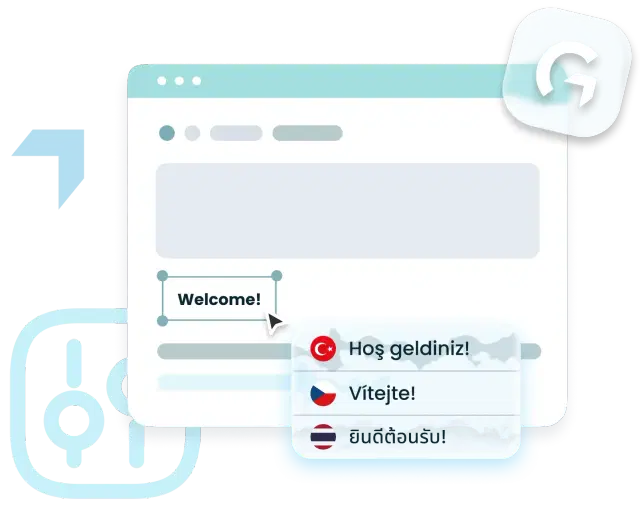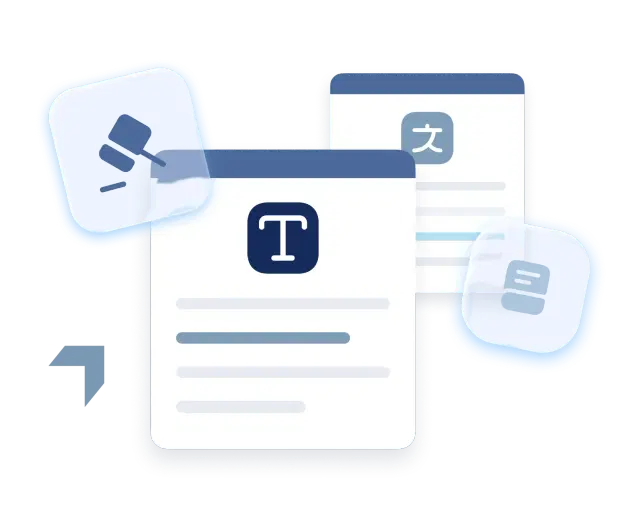Translation Problems: 9 Common Challenges and How to Solve Them
Translation problems can cause costly errors. Learn how to overcome linguistic problems in translation and ensure accuracy. Read further!
Updated on September 23, 2025
Translation Problems Explained: Key Challenges and Solutions
Translation is more than just converting words from one language to another. It requires precision, cultural awareness, and linguistic expertise to ensure accuracy. Even experienced translators encounter challenges, from miscommunication with clients to structural differences between languages.
Understanding common translation problems is the first step toward avoiding costly mistakes. This guide explores nine major linguistic problems in translation and provides actionable solutions to help you produce high-quality, accurate translations every time.

1. Poor Communication with Clients Leads to Mistranslations
How can miscommunication affect translation quality?
A lack of clarity between a translator and a client can result in misunderstood expectations, inaccurate translations, and wasted time. If the client provides vague instructions or the translator fails to ask the right questions, the final product may not meet the intended purpose.
Solution:
- Set clear expectations at the beginning of a project.
Ask detailed questions about tone, target audience, and terminology preferences.
2. Word-for-Word Translation Loses Meaning
Why doesn’t direct translation work?
Languages have unique grammar rules and idiomatic expressions that don’t always translate word for word. A literal approach can result in awkward or misleading translations.
For example, in French, the phrase “C’est la fin des haricots” translates directly to “It’s the end of the beans.” However, the actual meaning is “That’s the last straw.” A word-for-word translation would make little sense to an English speaker, illustrating how idioms and cultural expressions must be translated for meaning, not just words.
Solution:
- Prioritize meaning over direct translation.
- Use back translation techniques to verify accuracy.
- If you’re unsure, consult a native speaker or use translation memory tools within GlobalLink Web.
3. Using Incorrect Words Due to Language Nuances
How do word choices impact translation quality?
Some words and phrases lack direct equivalents in other languages, leading to inaccurate translations. This is especially problematic in legal, medical, and other technical translations, where precision is critical.
For instance, in legal texts, Latin terms like habeas corpus or de facto remain untranslated in English-speaking legal systems.
Solution:
- Research context-appropriate terminology before translating.
- Retain untranslatable words (such as legal Latin phrases) when necessary.
- Utilize terminology management within GlobalLink’s AI-driven translation tools for consistency.
4. Overuse of Complex or Technical Jargon
Why should translators simplify their language?
A highly technical translation isn’t always what the client needs. Using unnecessarily complex terms when a simpler alternative would suffice can make the content difficult to understand.
For example, technical manuals require clarity, whereas literary works may demand a richer vocabulary and nuanced word choices.
Solution:
- Tailor translations to client expectations and target audiences.
- Use plain language when translating instruction manuals or general content.
- For specialized fields, verify terminology with subject matter experts
5. Ignoring Style and Tone Requirements
Why does tone matter in translation?
Each type of content has a specific style and tone. Professional and academic documents often require formal terms, while marketing and creative content need engaging and persuasive language.
“Punctuation rules vary between languages and can significantly alter meaning. In English, the Oxford comma helps prevent ambiguity in lists, while in Spanish, commas often replace conjunctions like ‘and’ or ‘but,’ creating sentence structures that wouldn’t be grammatically correct in English.
Solution:
- Follow industry-specific style guides.
- Maintain cultural and linguistic consistency across documents.
6. Translating a Language You Are Not Proficient In
Why should translators specialize in certain languages?
A strong grasp of both the source and target languages is essential. Even fluent bilinguals may lack the technical expertise to translate accurately. Attempting to translate in a language you’re not fully proficient in increases the risk of misinterpretation.
Solution:
- Stick to languages where you have native or near-native fluency.
- Use peer reviews or professional editors for quality assurance.
7. Overloading Yourself with Too Many Projects
How does overworking impact translation quality?
Even the best translators have a daily word limit (typically 2,000–2,500 words). Accepting too much work can lead to rushed, lower-quality translations and missed deadlines.
Solution:
- Set realistic project deadlines.
- Prioritize quality over quantity to maintain your professional reputation.
8. Accepting Projects Outside Your Area of Expertise
Why is subject matter expertise important in translation?
Would you trust a lawyer to perform brain surgery? Likewise, an expert in legal translations may struggle with medical terminology.
Solution:
- Specialize in a few fields rather than attempting to translate everything.
- Work with industry professionals to refine technical accuracy.
- Use GlobalLink’s translation memory tools to maintain consistency in niche subjects.
9. Failing to Keep Up with Evolving Language Trends
How do new words impact translation accuracy?
Languages are constantly evolving. New slang, business jargon, and internet phrases emerge regularly. A translator who doesn’t stay updated risks using outdated terminology.
Solution:
- Read industry publications in multiple languages.
- Engage with native speakers and cultural experts.
- Keep up to date with pop culture and the latest trends.
Conclusion
Translation is a skill that demands precision, cultural awareness, and adaptability. While challenges exist, they are not roadblocks—they are opportunities to refine your craft.
By applying the right strategies, you can consistently deliver high-quality translations that are functionally accurate and culturally appropriate. Attention to detail, proactive communication, and the right tools make all the difference.
By mastering these principles, you’ll elevate your professional reputation, build client trust, and consistently deliver translations that meet the highest standards.
Need Help with Your Translation Process?
TransPerfect and GlobalLink empower businesses worldwide with cutting-edge translation solutions that improve accuracy and ensure seamless multilingual localization. Whether you need professional human translation, AI-powered automation, or specialized localization services, we have the tools to help you succeed.
Find Your Answers Here
Several factors contribute to the challenge of translating specific words. Some of them include the intricacies of languages and idiomatic expressions. Others include regional dialects, cultural contexts, untranslatable words, and ambiguity. Separately or combined, they can all make the task very difficult.
Professional translators can face several barriers in their work, including stylistic faithfulness and flexibility. Also, they can need help finding exact equivalents to words or fall into the trap of incorrect subjectivity when depicting the original message.
Translating idioms and metaphors can be challenging for professionals because they may have a different equivalent in the target language. Alternatively, they may differ in connotation or frequency of use. To manage these difficulties, translators often resort to more creative solutions, such as finding metaphors or idioms similar to the target language and matching the original tone and meaning. For example, ‘it's raining cats and dogs’ can be translated as ‘è un diluvio’ in Italian, 'está lloviendo mucho’ in Spanish, and ‘il pleut des cordes’ in French.
Explore Our Solutions
About
We created GlobalLink because we believe that all businesses great and small should have a beautifully translated and localized website.





